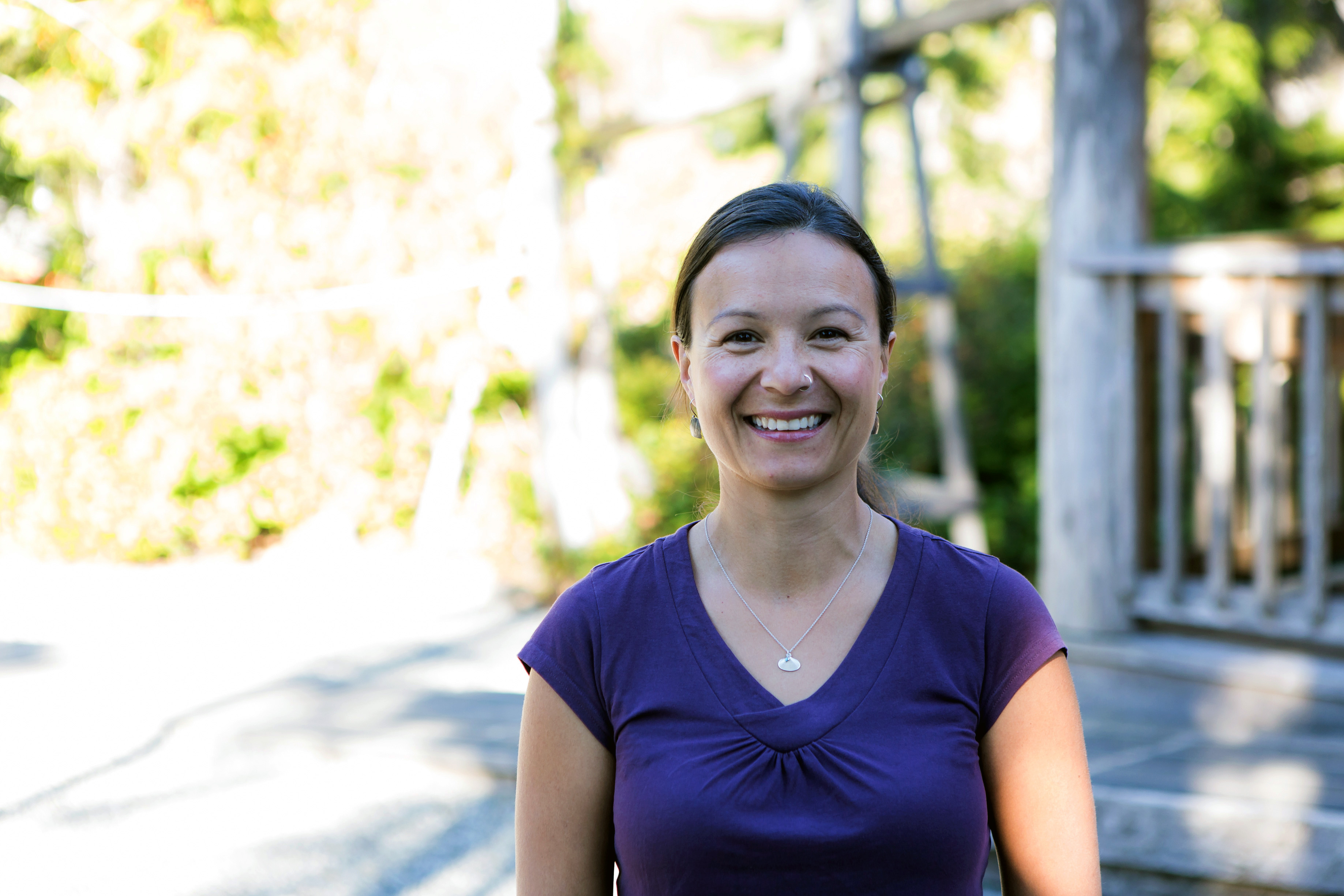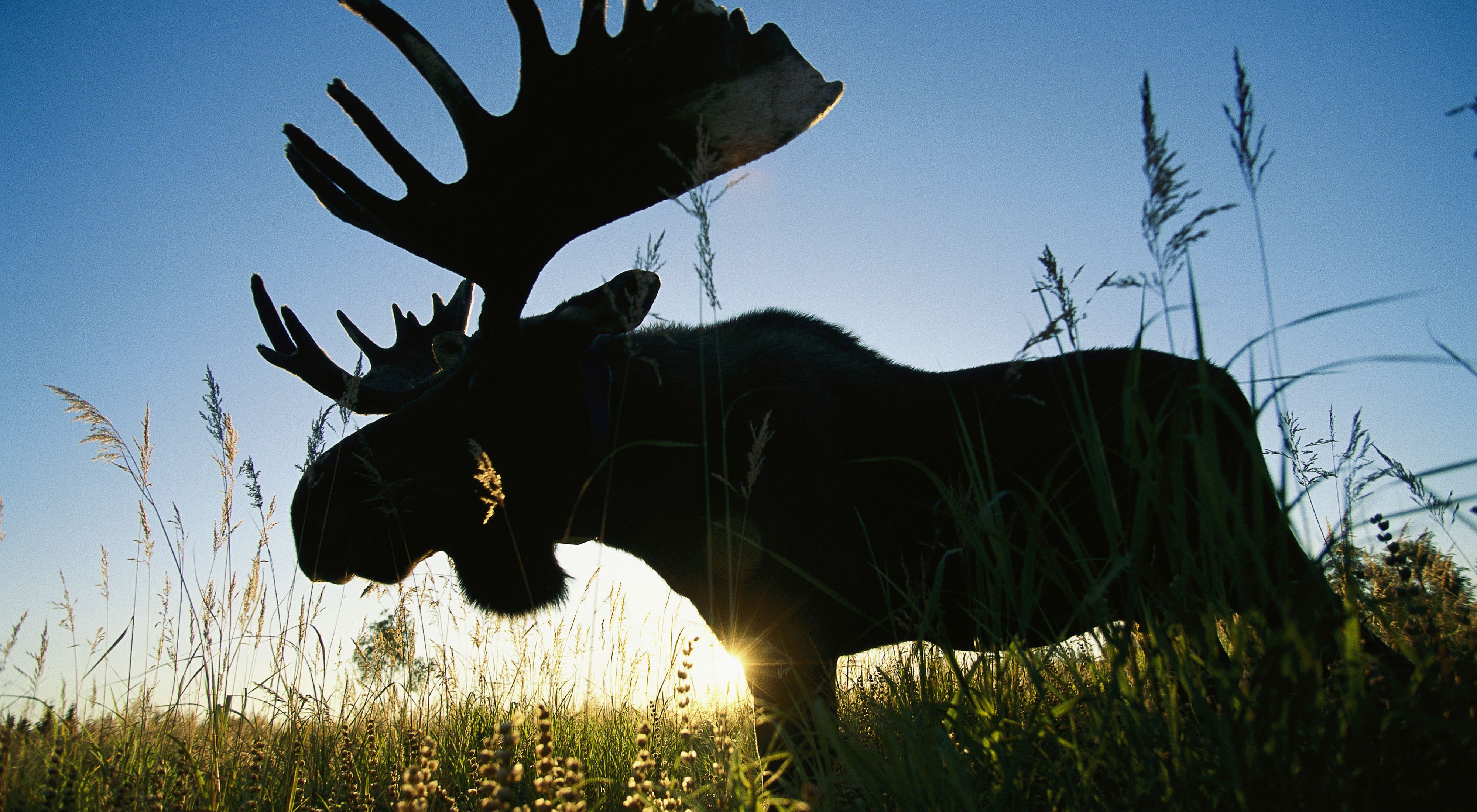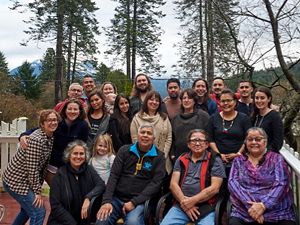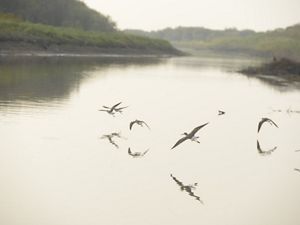Speaking for the Moose
In northern Manitoba, a workshop to discuss moose monitoring and stewardship resulted in community resources.
By Amanda Karst, Community Outreach Coordinator, and Ed Vystrcil, Nisichawayasihk Cree Nation
In an auditorium in Thompson, Manitoba, an Elder stood up and told the group gathered there that in recent years, when he’s gone into the forests where his father and grandfather hunted and called for moose, there’s been no answer. “The moose aren’t calling back,” he said.
Many in the room nodded in agreement, and when they stood to speak, their stories echoed his concern. “Sometimes it takes 10 days to find a moose where it used to take two days,” said a hunter. “I haven’t eaten moose in seven years,” said another, adding that he’d grown up on moose meat but the numbers in his traditional territory are so low that he’s voluntarily stopped hunting. “That is fasting,” said a councillor. “A big sacrifice. This is our traditional food, it’s our culture, and it has nourished us for hundreds of years.”
“This gathering has been a long time coming,” was said again and again by people in the room.
Quote: Elder

You don’t take the moose; the moose gives its life to you. I honour that animal as life giver the way I was taught by the Elders. I was taught to use every part of the moose.
A Long Time Coming
Held in December 2018, the gathering was organized by the Nisichawayasihk Cree Nation (NCN) and Nature United because First Nations in northern Manitoba had identified a need to come together to discuss their concern about declining moose populations. Representatives from seven First Nations attended the gathering, from Fox Lake Cree Nation in the Lower Nelson River area to Misipawistik Cree Nation on the shores of the Saskatchewan River to Wuskwi Sipihk First Nation along the western shores of Swan Lake.
NCN is in the later stages of their land-use planning process and moose is a top priority. The Nation is also interested in developing an Indigenous Guardians program to guide natural resource management. NCN sees Indigenous Guardians as a way to take care of their territory and help manage resources in accordance with Indigenous values. Nature United is working to support Indigenous leaders in northern Manitoba, and concern over moose populations is a common theme.
"It's our turn to speak for them."
A Cultural Keystone
Moose are a cultural keystone species, with critical importance as a food source and for traditional practices. One participant at the gathering said that moose is to Northern Cree as buffalo is to Plains Cree “we use everything, and all the teachings that the moose provides.” And while moose may not yet appear on federal or provincial Endangered Species lists, declines in populations are impacting Indigenous communities and have ripple effects in the forest ecosystem. The pressures on moose are compounding, according to the participants who talked about industrial pressures, over hunting, poor monitoring and management, disease, habitat loss and climate change.
By the time we reached the end of day two, we’d all acknowledged that this was just the start—there is so much to gain from working together to care for moose, based on the values and teachings of Indigenous peoples. Participants talked about continuing to share knowledge and starting to build a regional Indigenous collective to care for moose. The Elder who spoke about the moose not calling said “I think the moose are quiet right now because they want us to be the voice. Its our turn to speak for them”. As another Elder told the group, “Today I am 68. I would like my great grandchildren to see a moose walking. That is our work now.”
About the Authors
-

Amanda Karst
Amanda Karst joined Nature United in 2016 as Community Outreach Coordinator. She is Metis, originally from Saskatchewan, and now based in Manitoba. Read More
-

Ed Vystrcil
Ed Vystrcil is a proud Nisichawayasihk Cree Nation citizen and has led their territorial Land Use Planning process. Learn More










